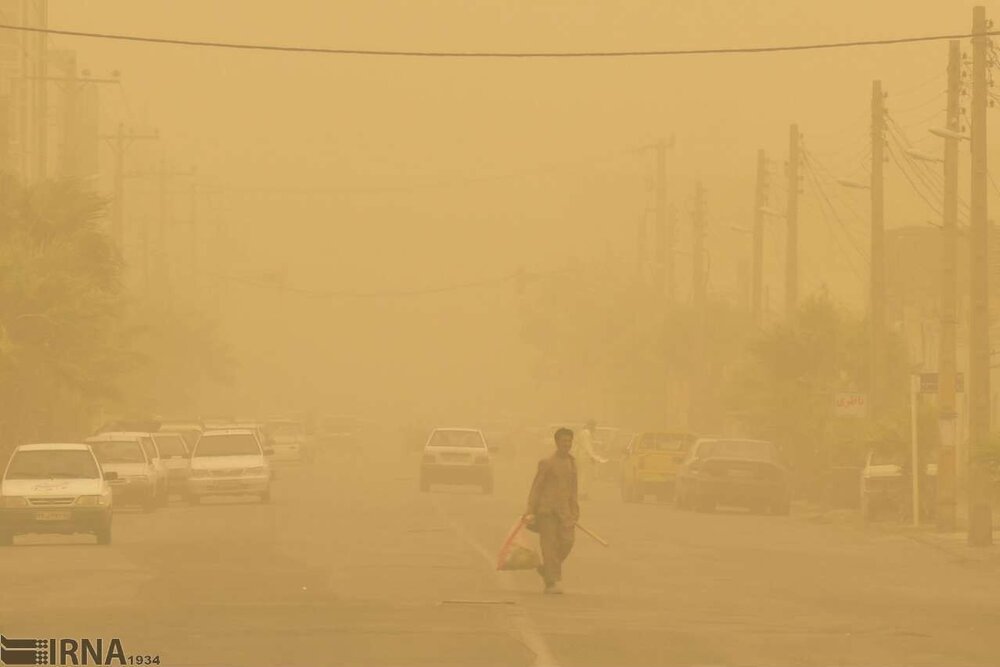Intl. bodies cooperating with Iran to deal with SDS

TEHRAN – A regional action plan has been prepared on fighting sand and dust storms (SDS) in eight external sources, and is planned to be shared with international organizations, Ali Mohammad Tahmasebi, head of the national working group for SDSs mitigation, has stated.
Tahmasebi went on to say that internal dust sources estimated at 34.6 million hectares, generate an average amount of 4.22 million tons of dust per year, of which 122.7 kilograms is raised per hectare annually.
Of this area, about 1.4 million hectares are from arid wetlands and about 2.5 to 3 million hectares are in habitats managed by the Department of Environment. Other areas are in agricultural lands, rangelands, and deserts, which is managed by the Forests, Rangelands, and Watershed Management Organization, he explained.
A 10-year national plan has also been drawn up to deal with internal SDS hotspots, in which the task of all related bodies is specified, he stated, IRNA reported on Tuesday.
"Moreover, a study has been conducted for the SDSs rising from neighboring countries, in which more than 20 countries have been studied. According to this study, a total area of 270 million hectares of areas has been identified that transport dust into Iran.
The total dust density is estimated at about 150 million tons and 540 kg of specific dust per hectare, which is about 3 times more than the dust generated in the country.
Based on this, two sub-programs have been composed, one for West Asia and the other for a part of Central Asia. The West Asia sub-program mainly covers the countries bordering the Persian Gulf. And the Central Asia sub-program also includes the countries in the north and east of our country, he also said.
It has been decided to follow the eastern and northeastern parts with ESCAP, which has its office in Tehran, and to follow the West Asian action plan with UNDP, he further highlighted.
So far, no joint action has been taken with international organizations because this environmental issue is not a priority for the neighboring countries, but we have decided to start with sub-regional action plans to be piloted in Iraq, he noted.
$2.1 billion damage to 6 provinces
"We conducted a study for 6 provinces of Khuzestan, Ilam, Kermanshah, Sistan-Baluchestan, South Khorasan, and Hormozgan. Based on which, this phenomenon incurred a loss of about 590 trillion rials (nearly $2.1 billion) in a 3-year period," he stated.
The destruction has occurred in different sectors of agriculture, household, industry, health, etc. Studies show that about 54 percent of the total damage was related to various agricultural sub-sectors alone, he lamented, emphasizing, a proper plan can prevent such considerable harm.
€370 million to combat SDSs
In the last four years, about €370 million has been spent from the National Development Fund to combat SDSs, which had good results, but it seems that the annual credit is declining as conditions improve, he added.
Last [Iranian calendar] year (March 2019-March 2020), €100 million was earmarked in this regard, but the next year's budget bill has proposed €20 million for SDS mitigation, which experts believe will even destroy those measures, he explained.
“However, various measures have been taken to fight the phenomenon, including, planting seedlings on about 26,000 hectares of dust centers in the past three years, as well as managing grazing in 2 million hectares of the protected areas and natural resources.”
Conservation agriculture (sustainable agriculture) was conducted on 160,000 hectares of farming lands, in addition to 100,000 hectares of dredging, he concluded.
FB/MG
